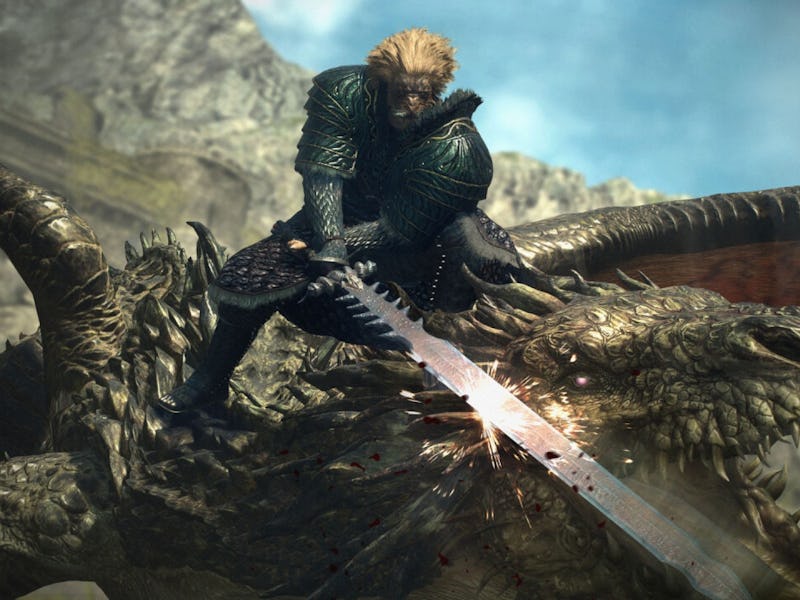Dragon's Dogma 2 Won't Be For Everyone — And That's Perfect
Sticking to the vision.

Dragon’s Dogma is one of the most unique games Capcom has ever made, a tremendously complex RPG that leans heavily on simulation and exploration elements. When the first game released in 2012, it was unlike anything else out, and that’s held true all these years later.
That is until Dragon’s Dogma 2, a sequel that builds on the unique vision of its predecessor, expanding the original into an experience that can be simultaneously fascinating and infuriating. Dragon’s Dogma 2 is a demanding game, often feeling like a throwback to a different time in the way it never spells things out. But putting in the time and effort yields an immensely satisfying experience with a dynamic, living world and plenty of stories to tell.
Dragon’s Dogma 2’s world is bristling with activity, and every single NPC has their own affinity system, and can even pass away (and be revived at the morgue).
In Dragon’s Dogma 2, you play as the “Arisen,” a chosen hero whose heart has been stolen by The Dragon. Your destiny is to track down the Dragon and taking it back. The Arisen also has the unique ability to control “Pawns,” human-like beings whose only purpose is to serve their master.
After the initial setup, you’re unceremoniously dumped into the high-fantasy kingdom of Vermund and only given vague directions of where to go next. This is indicative of the entire experience. Dragon’s Dogma 2 wants you to figure everything out on your own and comb through every inch of its world in the process.
There are two main ways Dragon’s Dogma 2 does this: quest design and lack of fast travel. Everything in the game is exploration-focused. Some quests have destination markers, while others provide much less guidance. Oftentimes you’ll need to use context clues, knowledge of lore, or sheer exploration to find the way forward.
For example, early in the game, I was asked to find a young boy named Rodge who’d suddenly gone missing. The only guidance I had was to talk to the local children. After tracking down a few, I learned Rodge had been hanging around some abandoned ruins and was looking for a specific kind of flower. Heading to the ruins, I discovered said flower was blue, and further exploration revealed a trail of blue petals that led into a cave.
Another quest had me follow an NPC through an entire day, seeing each, aggravating, step of their schedule. I followed this NPC for nearly an hour as he stopped at a tavern, went home to his wife, and struck out to his secret double life. It was fascinating.
In this way, Dragon’s Dogma 2 often goes against the modern conventions of what we expect from open world games. New quests are never marked on your map, but stumbled upon during exploration, or hinted at by your Pawn companions.
Dragon’s Dogma 2 wants you to take your time and explore, piecing its world and story together bit by bit.
To facilitate exploration the game heavily restricts its fast travel. To fast travel you need a consumable item called a Ferristone, but you can only travel to locations that have Port Crystals. Only a few locations in the entire game have these crystals, but you can also find movable Port Crystals that let you create new fast travel points anywhere in the world.
Most of your time will be spent running around, but Dragon’s Dogma 2 drip feeds discovery to make sure you always have something to find, whether it’s treasure chests, crafting items, new monsters, quests, or new characters.
All of this means Dragon’s Dogma 2 is largely what you make of it. Yes, there’s a central story, but so much of the game’s larger storytelling and lore is tucked behind optional quests and discoveries. That laser focus on player experimentation extends to every other facet of the game as well. The combat teaches you the basics, but all of its depth lies in creating different builds with equipment and skills, testing out new Vocations and party compositions. Even battling massive enemies requires a degree of experimentation, forcing you to figure out weak points and tactics, like learning Ogres are more likely to target female characters.
The best moments of Dragon’s Dogma 2 are how its systems come together, like a dragon swooping down on your battle with bandits.
To be clear, this reliance on exploration and experimentation was absolutely present in the first Dragon’s Dogma, but it feels like the sequel has doubled down. The big difference is that it simply plays better. Pawns are more vocal and helpful, sometimes leading you to treasure chests or objectives. The world feels more vibrant and fleshed out than ever before, the storytelling more focused and interesting. Combat also feels like a step up, with tight controls and character classes that all feel incredibly distinct and interesting.
There’s clearly a lot happening “under the hood” with Dragon’s Dogma 2’s massive world and simulated NPCs, which in my experience has sometimes led to bugs. I had multiple quests that required me to visit the prison, but for whatever reason the guards at the prison would attack me on sight, and no matter what I did I couldn’t get it to stop. These little mechanical issues can add to the frustration when you already aren’t sure of how to progress through quests.
It’s abundantly clear that Dragon’s Dogma 2 is the kind of game that won’t appeal to everyone, you get out of it what you’re willing to put in. But it’s also refreshing to see a game so different from anything else and so driven to achieve its singular vision. Dragon’s Dogma 2 can sometimes be messy and confusing, but that’s what makes it special.